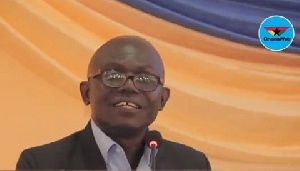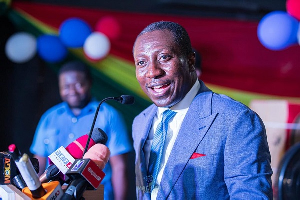The Institute of Statistical, Social and Economic Research (ISSER), University of Ghana (UG), on Tuesday said Ghana’s fiscal situation improved considerably in 2017.
The growth was attributed to both higher revenues and lower expenditures as a proportion of Gross Domestic Product (GDP), leading to a smaller fiscal deficit.
Professor Felix Ankomah Asante, Director, ISSER, College of Humanities, University of Ghana, stated this at the launch of the 27th edition of the "State of the Ghanaian Economy Report".
Prof Asante said to ensure that medium-term growth targets were met; there was a need for massive investment in productive infrastructure and for prioritising non-traditional exports.
On the fiscal side, he noted that there was the need for prudent management of government resources, while increased efforts should be pursued to mobilise revenue through an expanded tax base; adding that government expenditure must be kept under control.
Nana Osei-Bonsu, Chief Executive Officer, Private Enterprise Foundation, who formally launched the report, lauded ISSER for coming out with the annual report; stating that it would go a long way to help investors to make informed decisions.
Dr Simon Bawakyillenuo, a Senior Research Fellow/Head Statistics and Survey Division, ISSER, UG, said the motivation for continuing to publish the State of the Ghanaian Economy Report spring from their commitment to provide accurate, independent and well-researched information about the Ghanaian economy.
It said Ghana’s external balance improved substantially in 2017, due to both an expansion in exports and a contraction in imports, both nominally and as a proportion of GDP.
The report said trade balance even enjoyed a surplus, for the first time in recent history; adding that this balance was projected to fall slightly to -0.5 per cent by 2019.
It said the external current account deficit improved by some two percentage points in 2017, and was projected to fall further to 4.0 per cent by 2019.
On inflation, the report said Ghana’s inflation rate had been historically high, often about twice the Sub-Saharan African average.
Citing the International Monetary Fund (IMF), the report explained that however, the gap had been closing, with Ghana’s average inflation rate decreasing from 17.5 per cent in 2016 to 12.4 per cent in 2017, compared to SSA’s slight decline from 11.3 per cent to 11.0 per cent.
"Interest rates remain very high in Ghana, especially compared with very low rates globally. Such levels are likely to discourage borrowing and productive investment. Thus, the decline in real long-term rates in Ghana during 2017 is a welcome development," it said.
It said although total government debt had decreased from 73.4 per cent of GDP in 2016 to 71.8 per cent in 2017, it remains far above the debt-to-GDP ratio of SSA as a whole (45.9 per cent).
"Indeed, this 2017 debt ratio is double its level in 2009, and is huge by both historical and SSA standards, with a rapidly increasing share owed to the domestic and external private sectors."
With regards to the Government's flagship programme "Planting for Food and Jobs", the report recommended the pursuit of an economic-centred growth strategy that would ensure that employment expands along production and that the benefits of growth would be widely shared through better job opportunities and enhanced incomes.
The report said at 8.5 per cent Ghana’s gross domestic product (GDP) growth in 2017 was a rebound from the downward trend since 2011.
According to IMF report quoted by ISSER, Ghana’s growth rate was projected to slow to 6.3 per cent in 2018, down 2.2 percentage points on the 2017 rate. This forecast was based on lower growth of the oil sector but an increase in the non-oil growth rate from 4.0 per cent to 5.0 per cent.
However according to the ISSER report, a rise in non-oil sector growth would be good news, given the concern of possible oil dependency.
The ISSER projection also critically assumes that the erratic power outages (the dumsor challenges) involving constraints in energy supply would have been addressed, that of course remains to be seen, though significant improvements occurred in 2017.
The report said structural limitations in infrastructure and labour markets along with fluctuating commodity prices have contributed greatly to the recent slowdown in growth momentum in many emerging and developing economies.
It said continuing higher commodity prices would certainly help to prop up growth.
It said it was hoped that not only would the dumsor bottleneck be a thing of the past in Ghana for the medium and presumably long term, but also that the country’s other infrastructural problems would receive maximum attention in order to sustain growth.
Business News of Wednesday, 3 October 2018
Source: ghananewsagency.org

















